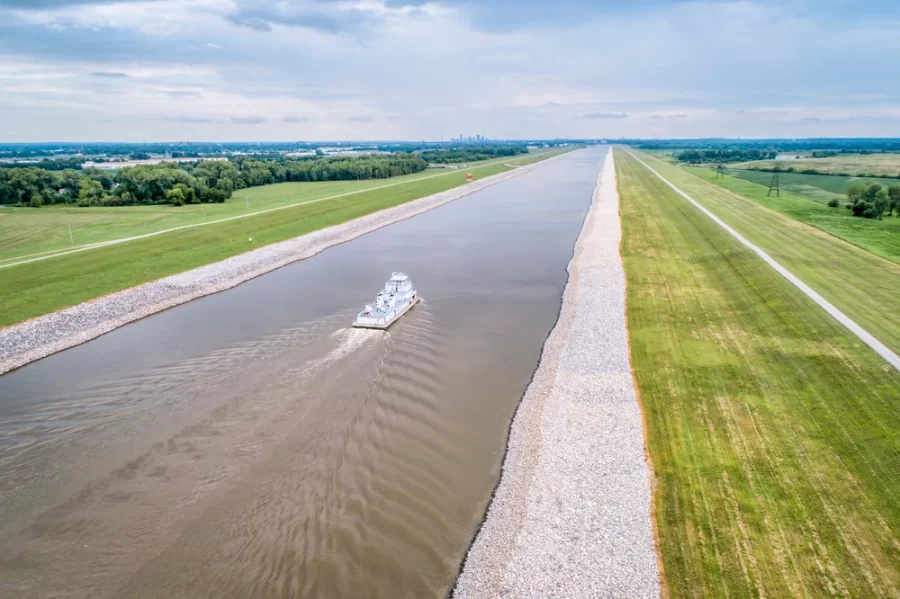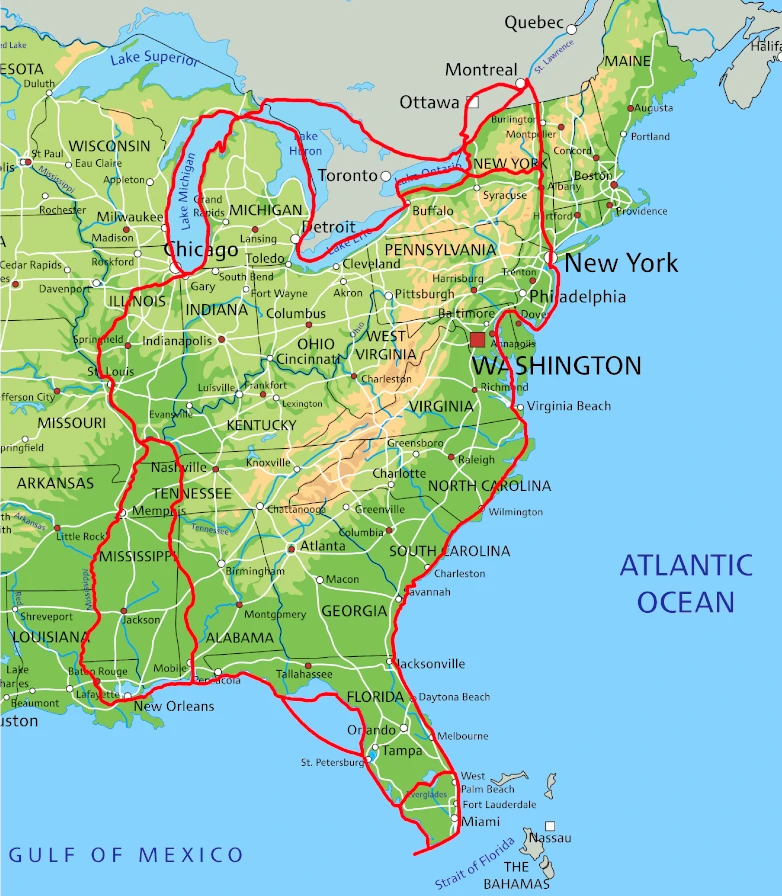
The Great Loop is a continuous waterway that encompasses parts of the Atlantic Intracoastal Waterway, the Gulf Intracoastal Waterway, the Great Lakes, inland rivers, and the Canadian Heritage Canals to make a loop around the Eastern United States.
You may not have known about this travel loop that is all water and cuts through the middle of the United States. Very few undertake this massive journey, but a recreational boater who does take on the Great Loop and makes it the whole way gets to be called a “Looper.”
The Great Loop is, on average, about 6,000 miles (9,656 km) in length, and depending on the route, the minimum length is about 5,250 miles (8,449 km). The journey usually takes boaters about a year to complete, though some have finished it in a couple of months. The record time was about six weeks. However, most boaters aren’t there to see how fast they can complete it but to enjoy seeing what the loop holds and making it all the way around.
Only about 200 boaters become “loopers” each year, and the water journey is probably less known than the American Discovery Trail that goes on land from coast to coast across the entire country. Retirees are usually the ones completing the loop, but a growing number of families are completing it as well.
Boaters travel the loop in a counter-clockwise direction to take advantage of the river currents on the Mississippi River. They have views of land access to facilities along almost the entire 6,000-mile route except for an area off the western coast of Florida and the Florida panhandle.
If a boater starts on the east coast of Florida, they will travel the Intracoastal Waterway all the way to New York City. From there, they would go up the Hudson River to the Erie Canal and into the Great Lakes, or if they wanted to make the journey longer, they would travel north into Canada and the St. Lawrence River to Lake Ontario. After traveling through Lake Erie, Lake Huron, and Lake Michigan, boaters make it to Chicago, about the halfway point of their journey.
From Chicago, boaters travel the Illinois River to the Mississippi River, where they can either ride the Mississippi river currents to the Gulf of Mexico or exit at the Tennessee River. This latter route avoids the heavy barge traffic on the Mississippi and leads to the Tennessee-Tombigbee Waterway, which traverses the distance between the Tennessee River and the Tombigbee River. The Tombigbee then merges with the Alabama River to form the Mobile River and flows into the Gulf at Mobile, Alabama.
Boaters exiting from the Mississippi or Mobile Rivers then get on the Gulf Intracoastal Waterway to travel east to the Florida panhandle. If boaters wanted to make a lengthy side trip at this point that is not part of the Great Loop, they could follow the Gulf Intracoastal Waterway west, where the waterway travels the entire length of the Texas coast.
After reaching the Florida panhandle, the journey continues down the west coast of Florida. Boaters can either continue down the coast to the Florida Keys and around the southern tip of Florida or cross the state from west to east on the Okeechobee Waterway. This waterway leads to Lake Okeechobee and eventually the Atlantic coast to finish their journey.
The Great Loop isn’t an official navigable route and follows federal and state-maintained waterways. The first to sail around the eastern half of the United States was 18-year-old Ken Ransom in 1898, along with three school friends. They started at Lake Michigan and began a harrowing journey on a 30-foot homemade sailboat named Gazelle. They completed the trip, though one of the boys had to return home to work on the family farm.
In 1906, boat builder Scott Matthews took his family on the first logged expedition of the Great Loop on a 70-foot, engine-powered yacht, opening the way for others to follow the same route used today on their path to becoming a “Looper.”
Sources: NOAA, National Geographic, The Travel, US Harbors, Lake Hub


